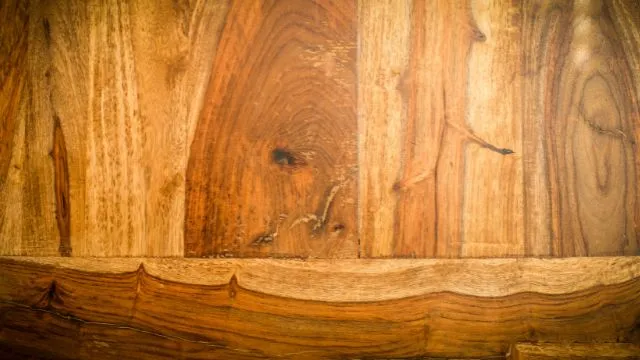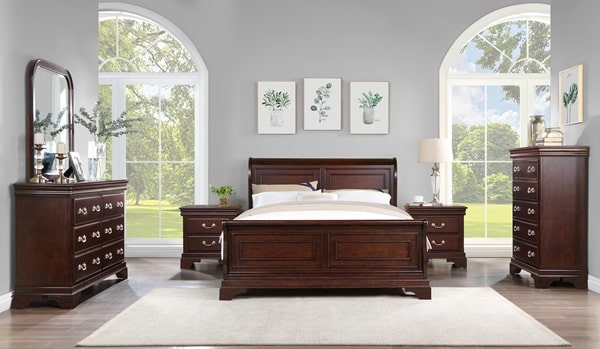For centuries, wood has been an integral part of civilization. Mankind has learned to use different kinds of wood for different purposes. The industrial revolution also helped create hybrid materials using wood. Today, the dependency on deforestation has been reduced, and wood is farmed just like any other fruit or vegetable. With the help of genetically modified seeds, we are able to grow trees faster and harvest wood at an equal rate. Talking about the variety of wood, you would have already known about Sheesham Wood, but a new variety that is getting very popular is Rubber Wood. So, what is the difference between the two and which is better? Let us learn more about rubber wood vs Sheesham wood in the section below.
What is Sheesham Wood?
Sheesham wood comes from Indian rosewood. The tree is grown in the foothills of the Himalayas, and this ranges from Afghanistan to the Indian subcontinent. The tree is also planted around the tea plantation areas. After harvesting the wood, it is dried to reduce the moisture content and used for different purposes.
Advantages of Sheesham Wood
- Durable – Sheesham wood is known to be extremely durable. It is heavy-duty wood, and it can last for generations. Once harvested, Sheesham wood goes through an extreme drying process, making it a stable wood for use in the home. If you are looking for something sturdy and durable, then Sheesham wood is your choice.
- Easy to Carve – Some people prefer carved furniture, which gives furniture a unique look. In such a case, Sheesham wood is a preferred option since it is easy to work with and it is also easy to carve.
- Easy to Maintain – Sheesham wood is not prone to any insect infestation, so you don’t have to worry about any treatment or pest control. All you have to do is that you have to wipe the wood clean using a soft and dry cloth.
- Economical and Eco-Friendly – Indian rosewood is available in abundance, and hence sheesham wood is considered an affordable option. In addition, Sheesham wood is harvested from mature trees, and a replacement is planted after felling the old tree.
- Sturdy – Sheesham wood can take a lot of abuse. It is heavy-duty and dense wood, because of which the furniture made out of Sheesham wood is very sturdy. It is the best option if you want to maintain the quality of the furniture.
Disadvantages of Sheesham Wood
- Heavy – Since Sheesham wood is dense, it is also very heavy. If you are trying to build something portable, then Sheesham wood should be avoided. It isn’t easy to move around, so you may want to use some other replacement, like rubber wood.
- Water Damage – Sheesham wood is also porous; hence, it can take a lot of damage if left in the open. This can lead to rotting of the wood. The wood is treated properly during harvesting, so the chances of inspects are nil, but you should still save it from high moisture content.
What is Rubber Wood?
Rubber wood is obtained from Para Rubber Tree, and it is a medium-density wood. The trees are fairly common in rubber plantation areas, and often, rubber wood is considered environmentally friendly. In Malaysia, rubber wood is known as Malaysian Oak. This wood is treated with chemicals before anything is made out of it. This wood is harvested from rubber trees that have reached the end of their life.
Advantages of Rubber Wood
- Affordable – Rubberwood is known to be a little more affordable than Sheesham wood. So, if cost is your priority, then we highly recommend opting for rubber wood than anything else. Since it is medium density, it is also easy to work with.
- Durable & Sturdy – Rubberwood is durable and sturdy, but it is less sturdy than Sheesham wood. You will get an optimal level of durability from rubber wood, which offers great value for money since it is affordable.
- Environment Friendly – As mentioned earlier, rubberwood is harvested from rubber trees that are end of life, and hence it is preferred over other options. It is known to be environment-friendly wood.
- Flexible Wood – Rubberwood is also flexible; hence, it can be moulded or curved easily using high pressure and steam. Since it is a medium-density wood, it makes it easy to work with rubber wood. However, please note that rubber wood can’t be carved properly.
- Low Shrinkage – The shrinkage of rubber wood is low; hence, it is considered stable wood. This is also why rubber wood is a popular option in the construction industry and other such areas.
Disadvantages of Rubber Wood
- Needs Chemical Treatment – Rubberwood is prone to fungal growth and insect infestation. So, you would need to ensure that the rubber wood you buy is appropriately treated.
- Not For Outdoor Usage – Rubberwood is not designed for outdoor furniture. Using it in a wet area or outdoors can leach the chemical used for treating the rubber wood. This will result in insect infestation. Moreover, you will also notice the warping and rotting of wood because of moisture.
Final Take
This was a short comparison between rubber wood and Sheesham wood. Talking about the main points, rubber wood is slightly more affordable than Sheesham wood, but it is prone to insect infestation. On the contrary, Sheesham wood has a higher density and is used for creating beautiful designs. Based on the pros and cons shared above, you can choose between the two options.



